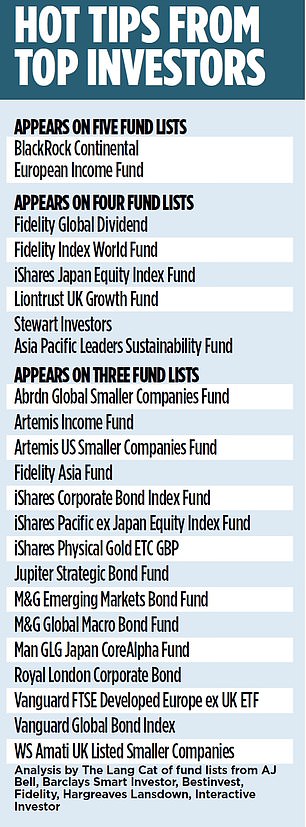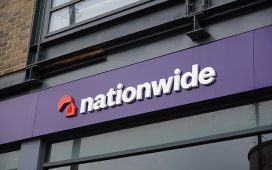There is one thing more useful than a recommendation from a trusted source – and that is getting the same suggestion from several. Take a film recommendation for example – you might take notice when you read an excellent review of a movie, but you are even more likely to go to the cinema if you see several.
And in the world of investing, recommendations are especially valuable. That is because investors have several thousand funds to choose between – and whittling that number down to a handful to hold in a portfolio is no easy task.
That is why Wealth & Personal Finance has teamed up with consultancy The Lang Cat to compile a list of the most-recommended funds by the UK’s top six investment platforms.
All six have their own list of recommended funds – which stretch to between 49 and 93 each. The Lang Cat has cross compared these lists to find the funds that crop up again and again.
There is no guarantee that these funds are good options for your portfolio. After all, the investment platforms’ lists are not designed as personal recommendations, but rather as ideas to consider. But, since these funds are so popular, it may be worth running the rule over them and considering whether they fit your own investment strategy.

Hot tips: We have teamed up with consultancy The Lang Cat to compile a list of the most-recommended funds by the UK’s top six investment platforms
What are recommended funds?
Investment platforms understand that narrowing down thousands of funds to just a few can be daunting. It can be difficult for investors to know where to start. So, to help make life easier for customers, most publish a list of their favourite funds that they are happy to recommend.
AJ Bell’s list of 76 is called its Favourite Funds; Barclays Smart Investor has 50 on its Funds List; Bestinvest has 93 on its Best Funds List; Fidelity has 49 on the Select 50; Hargreaves Lansdown 72 on its Wealth Shortlist; and Interactive Investor 62 on its Super 60.
The number of recommendations on each list tends to fluctuate over time.
Each platform has its own methodology for picking what goes on its favourite funds list. Most will consider factors including how the fund has performed compared to its rivals, how much it costs and how risky its strategy is in comparison to the returns it hopes to achieve.
There is no guarantee that the platforms will select the winners.
What is certain is that any funds on these lists should have gone through a lot of due diligence – both to get on and to stay on the list. Recommended fund lists have proven controversial in the past. City regulator the Financial Conduct Authority has had them under scrutiny.
And their reputation was tarnished by the fact that Hargreaves Lansdown held the failed Woodford Equity Income Fund on its best-buy list despite growing industry concerns about it.
But, as a result, no investment platform wants to be caught short recommending something that comes unstuck. All will have robust strategies to keep an eye on their lists and make sure they deliver what they have promised to investors.
Interestingly, The Lang Cat research reveals that there is surprisingly little overlap between the lists. There are more than 300 funds that appear across the six lists. Of these, not a single one is on all six lists, only one is across five, five appear across four lists and just 15 funds are on three lists.
Mike Barrett, consulting director at The Lang Cat, says the lists can be useful, but investors must make sure funds meet their own needs and appetite for risk.
‘Best ideas lists can help cut through some of the noise but, as the lack of correlation across the lists from the six biggest platforms shows that even the experts disagree on which funds are best,’ he says.
The fund that is recommended most
Blackrock Continental European Income Fund is the only investment named on five of the six lists. A £1,000 investment in this fund would have grown to £1,520 over the past five years. That is slightly above the average for this sector of £1,479.
The fund invests in large companies based across Europe, the likes of Danish pharmaceutical firm Novo Nordisk and French Louis Vuitton and Moët owner LVHM.
It aims to provide investors an income with dividends as well as growth from rising share prices. Hargreaves Lansdown points out that although the fund’s managers invest in mainly larger, more established European firms, they have the flexibility to invest in higher-risk small and medium-sized outfits as well.
Interactive Investor is also a fan. It says the fund benefits from an experienced management duo of Andreas Zoellinger and Brian Hall and a well-resourced team.
It also likes its ‘style-agnostic’ approach – it doesn’t just focus on a single strategy, such as looking for companies that appear cheap or are currently out of favour. ‘The manager’s approach leads to a steadier return profile and to outperformance during periods of market weakness.’ Interactive investor adds that the fund produces good returns for the amount of risk it takes in comparison to its peers.
Funds with four recommendations
Five funds are recommended by four different investment platforms. Fidelity Global Dividend is one. A £1,000 investment five years ago would now be worth £1,503, which is slightly higher than the average return for similar global equity income funds of £1,481.
The fund invests in large companies from around the world such as consumer goods giant Unilever, information provider RELX and German stock exchange Deutsche Börse.
Interactive Investor says the fund typically outperforms strongly during periods of market weakness, while keeping up in rising markets, too. It has yielded an income in a range of 3.1 and 3.3 per cent over the past three years.
Also named across four lists is the Fidelity Index World Fund, which aims to track the performance of the MSCI World – in other words, an index of the biggest companies from around the globe.
An investment of £1,000 five years ago would be worth £1,718 today. This compares to the average for global funds of £1,528. Its top holdings are the biggest companies of today: Microsoft, Apple, Nvidia and Amazon.

There are several similar global index funds available to investors. One reason this one may have been singled out by four providers is price. With fees at just 0.12 per cent it’s a very low-cost way to get access to more than 1,600 of the biggest companies in the world.
iShares Japan Equity Index Fund closely tracks the performance of the FTSE Japan Index – in other words an index of the biggest companies in Japan.
It has turned a £1,000 investment into £1,390 over five years, compared to an average of £1,354 for all Japanese funds available to UK investors.
Top holdings include carmakers Toyota and Mitsubishi and electronics firm Sony.
It is a passive fund, which means holdings are chosen to follow the index rather than handpicked by a fund manager. That means it is very low cost – with an ongoing charge of just 0.08 per cent.
Bestinvest is one of the platforms that recommends it. It says the fund ‘has consistently demonstrated strong characteristics over the long term’ and ‘its fee structure is extremely attractive – it is ultra-low cost.’
Liontrust UK Growth Fund invests almost exclusively in UK companies. Its top holdings include Shell, AstraZeneca, BP, Unilever and GSK. It has turned a £1,000 investment into £1,269 over five years, in comparison to an average of £1,206 for UK funds.
Hargreaves Lansdown is among the four platforms that recommend the fund on their list. It says the fund’s approach is to find the few companies with an edge over the competition that will allow them to earn above-average profits for the long term.
It adds: ‘The managers believe the hardest economic advantages to copy are intellectual property, such as patents and trademarks, strong distribution channels and significant repeat business. That’s why a company must have at least one of these attributes before it’s considered for the fund.’
Stewart Investors Asia Pacific Leaders Sustainability Fund invests in shares of large and medium-sized listed companies that are based in the Asia-Pacific region, excluding Japan.
Around 40 per cent of the portfolio is invested in Indian companies, followed by 12 per cent in Taiwanese firms.
Top holdings include automobile company Mahindra & Mahindra, Indian bank HDFC and electronics manufacturer Samsung.
The fund has turned £1,000 into £1,330 over five years, in comparison to its benchmark of other so-called specialist funds of £1,293.
Fidelity is among the platforms that like this fund. Stewart Investors is one of the pioneers in sustainable investing, which is one reason Fidelity favours it.
The platform says: ‘The manager has a long tradition of investing in the region and an experienced team of experts. A leading company, in Stewart’s view, is one with a resilient balance sheet, good franchises, a strong culture and a focus on sustainability.
‘The manager performs detailed research, has on-the-ground specialists and is clear on what an ideal investment looks like.’
But don’t just buy the lot!
Recommended funds should be treated as ideas to consider – inspiration rather than prescriptions. Were you to buy the lot, you would likely end up with a very skewed portfolio.
Most experts tend to agree that the key to a good portfolio is balance – a nice blend of geographies and sectors. That way, you’re not overexposed if one region or sector takes a bad hit.
If you buy funds purely on recommendations, you may end up with three Japan funds and no exposure to the US, for example.
Also, remember that these recommendations change regularly, so you will need to keep your eye on the ball.
For example, The Lang Cat points out that around 70 per cent of the funds on Fidelity’s list have changed in the past two years.
When a platform removes a recommendation, you may need to consider whether it still fits your strategy or if there are grounds for removing it from your portfolio.
However, bear in mind that buying and selling regularly tends to incur fees, which detracts from your investment returns.
When you buy you should be hoping to hold for the long term.
Some links in this article may be affiliate links. If you click on them we may earn a small commission. That helps us fund This Is Money, and keep it free to use. We do not write articles to promote products. We do not allow any commercial relationship to affect our editorial independence.










